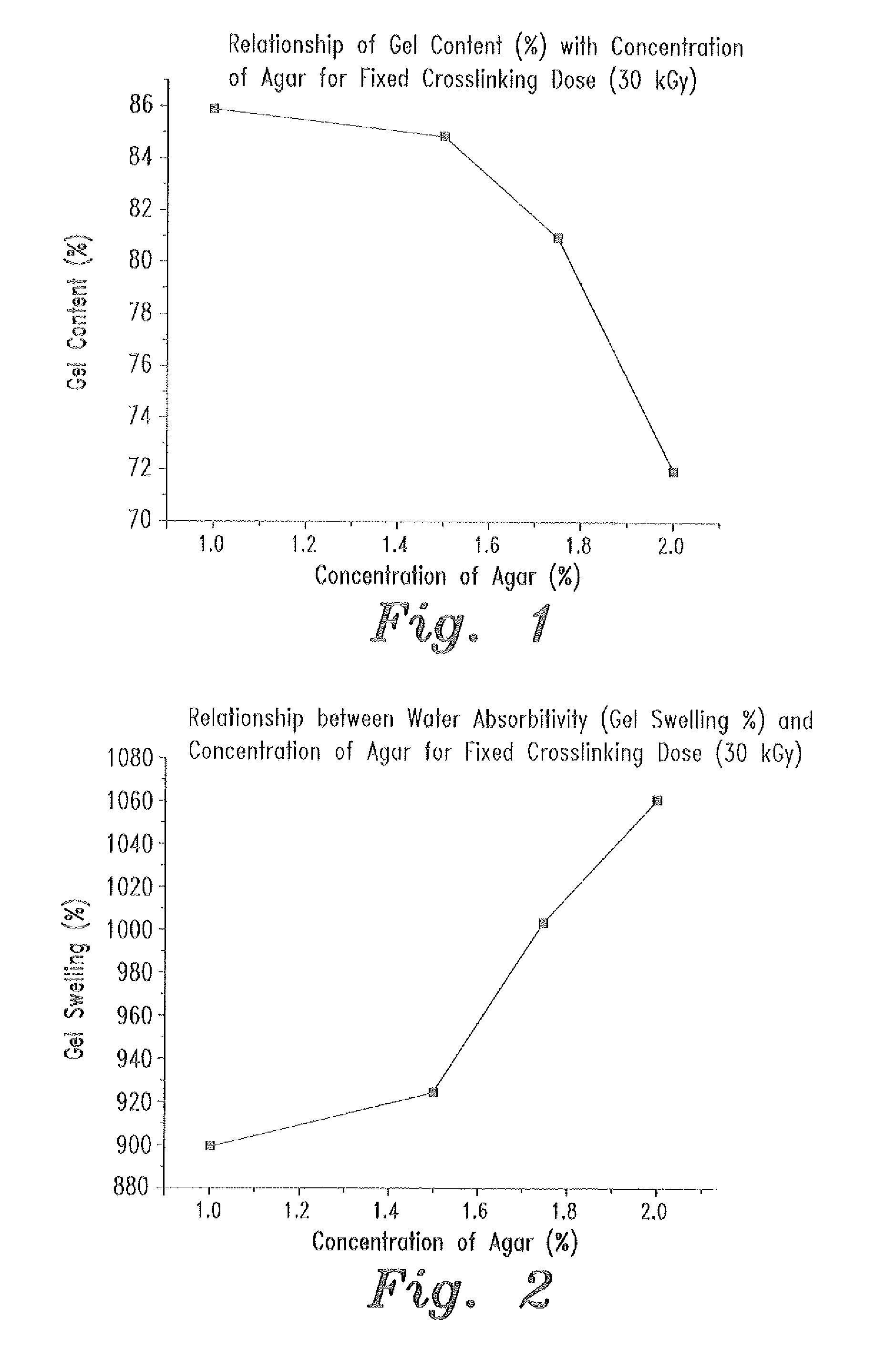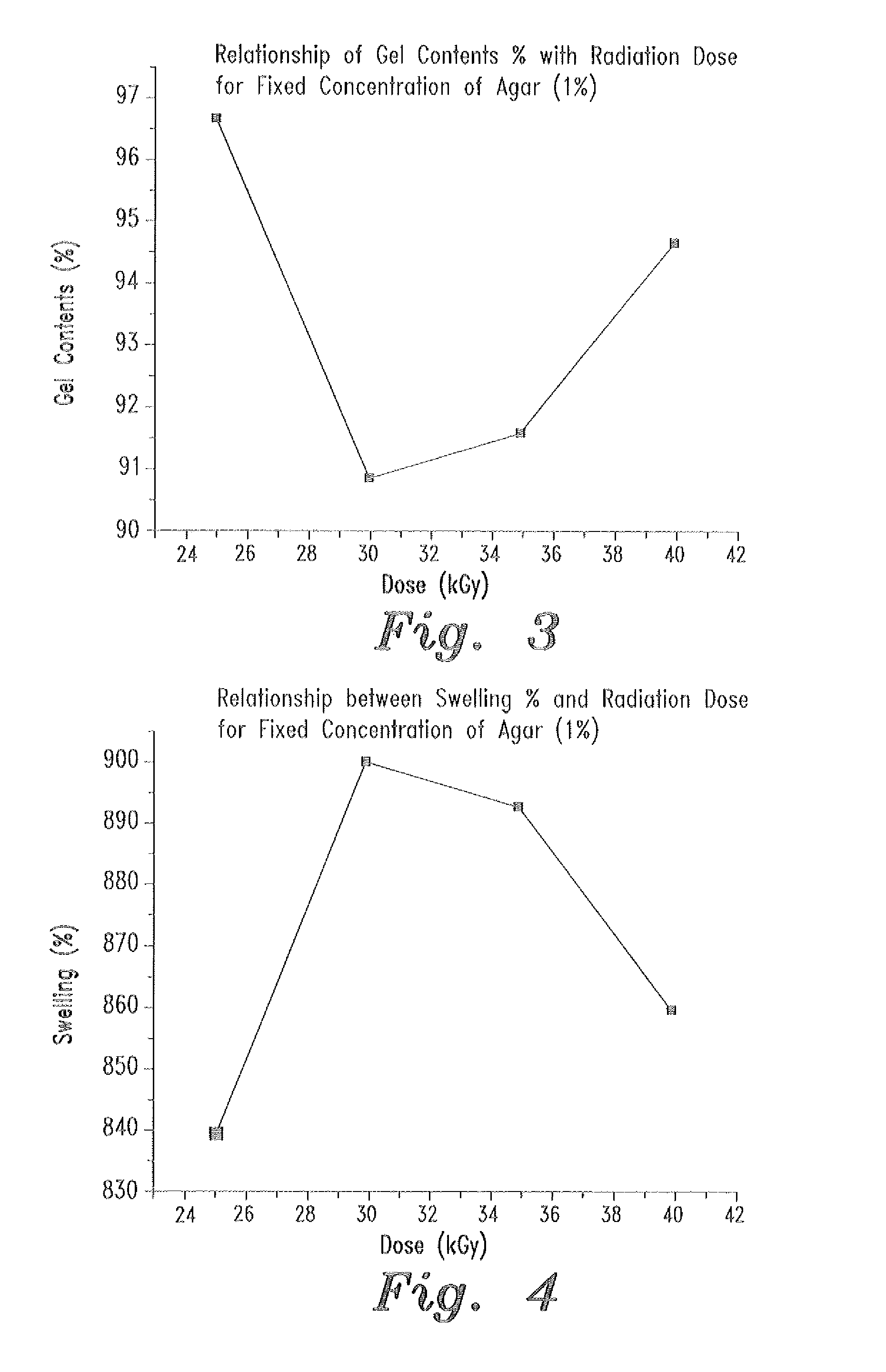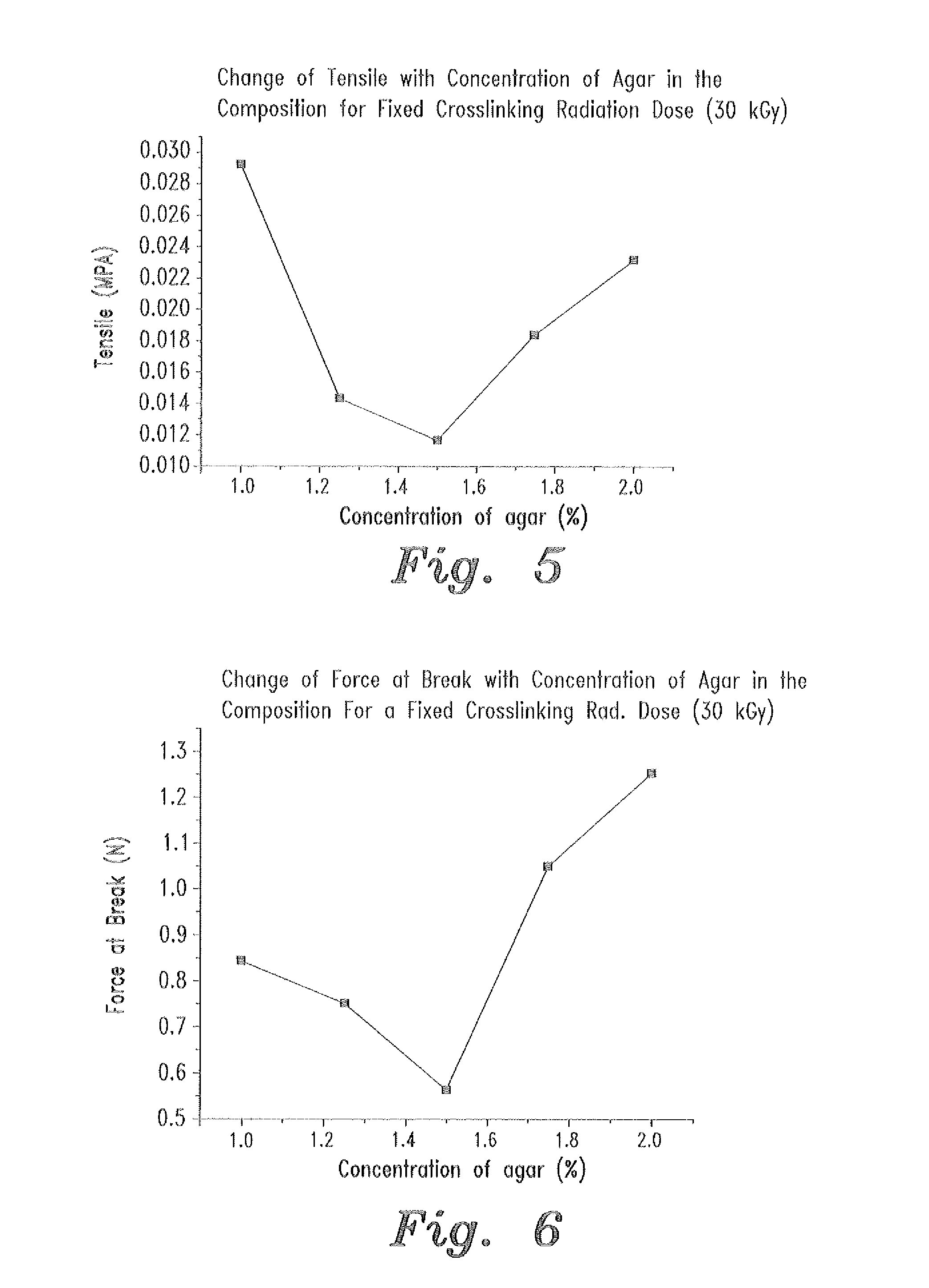Antimicrobial hydrogel wound dressing
a wound dressing and anti-bacteria technology, applied in the field of wound dressings, can solve the problems of wound dressings that are easily shed, wound dressings that are not strong enough, and wound dressings that are often prone to tear, and achieve the effect of sufficient mechanical strength
- Summary
- Abstract
- Description
- Claims
- Application Information
AI Technical Summary
Benefits of technology
Problems solved by technology
Method used
Image
Examples
example
[0030]The following materials were used. Polyvinyl alcohol (PVA) with average molecular weight 146,000-186,000 and degree of hydrolyzation of 99+% (compound I); polyvinyl pyrrolidone, (PVP), with an average molecular weight of 44,000, purchased from BDH Chemicals, England, (compound III); agar, purchased from DIFCO Laboratories, Detroit, Mich., USA, (compound IV); polymyxin B sulfate, purchased from MP Biomedical, USA, (compound V); and neomycin sulfate, purchased from Savniver Limited, China, (compound VI) were used for preparation of the wound dressing. All polymers, materials, and drugs were used without further purification.
[0031]For testing the antimicrobial properties of the wound dressing, cultures of the following microorganism were used in the study: gram-negative Escherichia coli, Pseudomonas aeruginosa, Klebsiella pneumonia, Proteus spp., and Salmonella spp. The pure cultures were obtained from the College of Science, Botany and Microbiology Dept., Research Central Labora...
PUM
| Property | Measurement | Unit |
|---|---|---|
| melting point | aaaaa | aaaaa |
| melting point | aaaaa | aaaaa |
| temperatures | aaaaa | aaaaa |
Abstract
Description
Claims
Application Information
 Login to View More
Login to View More - R&D
- Intellectual Property
- Life Sciences
- Materials
- Tech Scout
- Unparalleled Data Quality
- Higher Quality Content
- 60% Fewer Hallucinations
Browse by: Latest US Patents, China's latest patents, Technical Efficacy Thesaurus, Application Domain, Technology Topic, Popular Technical Reports.
© 2025 PatSnap. All rights reserved.Legal|Privacy policy|Modern Slavery Act Transparency Statement|Sitemap|About US| Contact US: help@patsnap.com



